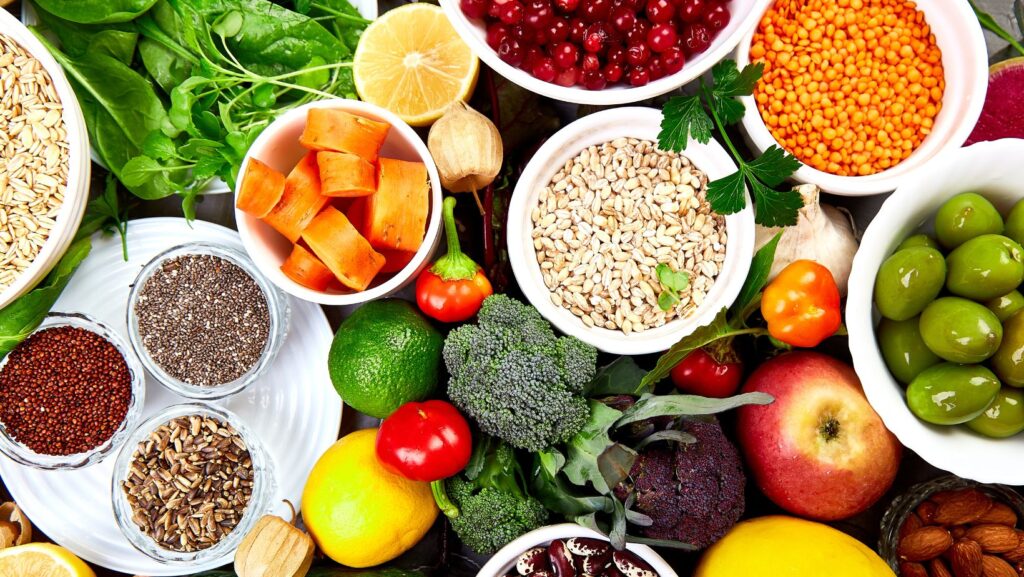How Nutrition Knowledge Helps Transform Simple Recipes Into Healthy Meals

Across home kitchens worldwide, everyday recipes often begin with familiar ingredients and straightforward preparation methods. Yet the difference between an ordinary dish and a nutrient-dense meal frequently comes down to the cook’s understanding of healthy nutrition.
With even a modest amount of nutritional awareness, home cooks can adapt their favorite meals to support better energy, improved wellness, and long-term health outcomes. Understanding how ingredients, macronutrients, and cooking methods affect the body enables simple meals to become powerful tools for nourishment. This foundation makes healthy eating practical, approachable, and sustainable, not a trend, but an informed daily choice.
Ingredient Swaps That Strengthen Everyday Meals
Healthy nutrition starts with understanding the nutritional profile of common ingredients. When home cooks recognize how one ingredient compares to another, they begin to make swaps that elevate a dish without changing its flavor or purpose.
Replacing white flour with whole-wheat flour increases dietary fiber, which supports digestion and helps maintain steady energy levels. Switching from sour cream to Greek yogurt adds protein while reducing saturated fat, turning a simple topping into a healthier alternative.
These adjustments require minimal effort yet significantly improve the nutritional quality of everyday meals. This ability to make informed swaps deepens as cooks gain more formalized knowledge, such as what students study in a Lamar University master’s in nutrition program, where the science behind these choices becomes clearer.
With that understanding, home cooks feel more confident experimenting with ingredients. Healthy nutrition is a skill, and like any skill, it improves with practice. Small changes create meaningful long-term results.
Balancing Macronutrients for Satisfying, Nutritious Dishes
Understanding healthy nutrition ensures meals include a balanced mix of protein, carbohydrates, and fats. This balance directly affects how satisfied, energized, and nourished a person feels after eating.
Incorporating lean protein, such as chicken breast, lentils, or beans, into pasta dishes or grain bowls helps stabilize appetite and maintain steady blood sugar. Adding nutrient-rich fats like avocado, nuts, or seeds enhances both flavor and nutritional completeness. These simple modifications transform everyday recipes into meals that truly support daily well-being.
Understanding macronutrients also empowers cooks to pair foods in ways that optimize digestion and nutrient absorption. For example, combining plant-based iron sources with vitamin-C-rich vegetables improves iron uptake. Including fiber-dense foods supports heart health and gut balance. Healthy nutrition is not about restriction; it is about assembling ingredients that work together harmoniously. When macronutrients align, even a basic recipe gains greater nutritional value and lasting satisfaction.
Reducing Excess Sodium and Sugar Through Natural Flavoring
A key part of healthy nutrition involves recognizing how sodium and sugar accumulate in meals, particularly when relying on processed ingredients. Awareness of recommended dietary guidelines encourages home cooks to reduce excess salt and sugar without compromising flavor. Using herbs, spices, garlic, citrus, and vinegars instead of bottled sauces or high-salt seasonings adds vibrant natural flavor. These choices enhance taste while supporting healthier blood pressure and glucose levels.
This approach enhances home cooking by encouraging creativity. A squeeze of lemon over roasted vegetables, fresh basil stirred into soups, or paprika added to poultry can dramatically shift flavor profiles. More importantly, these choices reduce reliance on processed additives that can undermine nutritious meal planning. A solid understanding of nutrition helps cooks season food more intentionally and thoughtfully. Healthy nutrition thrives on nuance; small decisions made consistently during meal preparation add up to better overall health.
Cooking Methods That Preserve Nutrients and Improve Quality
Healthy nutrition involves more than choosing the right ingredients; it also requires selecting cooking methods that preserve nutrients. Specific techniques maintain vitamins and minerals far better than others. Steaming or baking vegetables preserves more nutrients compared with frying, where high heat can break down heat-sensitive vitamins and minerals. Slow simmering, light sautéing, and air-frying are additional methods that enhance flavor while supporting better nutrient retention.
Changing the cooking method can transform the nutritional profile of familiar foods. A baked chicken breast seasoned with herbs provides lean, nutritious protein, whereas the same cut, deep-fried, contributes excess calories and saturated fats.
Even minor adjustments, such as roasting potatoes with olive oil instead of pan-frying them, produce meals that feel satisfying without being heavy. When home cooks understand how heat, moisture, and cooking time affect nutrients, they approach recipes with more strategic planning. Healthy nutrition becomes an integral part of the cooking process, guiding every technique used in the kitchen.
Portion Awareness and Micronutrient Enhancement
Healthy nutrition is also rooted in understanding portion sizes and micronutrient needs. Recognizing how much food the body actually requires supports weight management, balanced energy, and mindful eating. When home cooks learn how caloric needs shift with activity level and age, they can adjust recipe yields accordingly. Measuring portions, planning balanced plate ratios, and reducing oversized servings help align meals with individual dietary goals.

Beyond portions, micronutrients, vitamins, minerals, and antioxidants play a crucial role in overall wellness. Incorporating colorful fruits and vegetables into recipes boosts micronutrient density without increasing effort. A simple stir-fry becomes even more nutritious when bell peppers, broccoli, and leafy greens are added to the pan.
A breakfast bowl gains antioxidants when topped with berries, nuts, or seeds. Healthy nutrition thrives on variety, and the more diverse the ingredients, the broader the nutritional benefits. These thoughtful enhancements turn everyday meals into nutrient-rich dishes that support long-term health.
Healthy Transformation
Nutrition knowledge is a powerful tool for transforming simple recipes into healthier meals. By understanding ingredient choices, macronutrient balance, sodium and sugar reduction, cooking methods, and micronutrient needs, home cooks can transform everyday dishes into meals that genuinely support overall well-being.
Healthy nutrition is not about complicated rules but about informed decision-making. When nutrition knowledge guides preparation, even the most straightforward recipe becomes an opportunity to nourish the body with intention and confidence.




